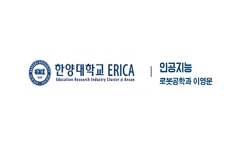Purpose: The Paprosky classification system of acetabular defects is complex and its reliability has been questioned. The purpose of this study was to evaluate the effectiveness of different radiologic imaging modalities in classifying acetabular defe...
http://chineseinput.net/에서 pinyin(병음)방식으로 중국어를 변환할 수 있습니다.
변환된 중국어를 복사하여 사용하시면 됩니다.
- 中文 을 입력하시려면 zhongwen을 입력하시고 space를누르시면됩니다.
- 北京 을 입력하시려면 beijing을 입력하시고 space를 누르시면 됩니다.


Utility of Radiographs, Computed Tomography, and Three Dimensional Computed Tomography Pelvis Reconstruction for Identification of Acetabular Defects in Residency Training = Utility of Radiographs, Computed Tomography, and Three Dimensional Computed Tomography Pelvis Reconstruction for Identification of Acetabular Defects in Residency Training
한글로보기https://www.riss.kr/link?id=A104179965
-
저자
( Johannes F. Plate ) (Wake Forest School of Medicine) ; ( John S. Shields ) (Wake Forest School of Medicine) ; ( Maxwell K. Langfitt ) (Wake Forest School of Medicine) ; ( Michael P. Bolognesi ) (Duke University) ; ( Jason E. Lang ) (Blue Ridge Bone and Joint) ; ( Thorsten M. Seyler ) (Wake Forest School of Medicine)

- 발행기관
- 학술지명
- 권호사항
-
발행연도
2017
-
작성언어
Korean
- 주제어
-
등재정보
KCI등재,SCOPUS
-
자료형태
학술저널
- 발행기관 URL
-
수록면
247-252(6쪽)
-
KCI 피인용횟수
0
- DOI식별코드
- 제공처
- 소장기관
-
0
상세조회 -
0
다운로드
부가정보
다국어 초록 (Multilingual Abstract)
Purpose: The Paprosky classification system of acetabular defects is complex and its reliability has been questioned. The purpose of this study was to evaluate the effectiveness of different radiologic imaging modalities in classifying acetabular defects in revision total hip arthroplasty (THA) and their value of at different levels of training.
Materials and Methods: Bone defects in 8 revision THAs were classified by 2 fellowship-trained adult reconstruction surgeons. A timed presentation with representative images for each case (X-ray, two-dimensional computed tomography [CT] and three-dimensional [3D] reconstructions) was shown to 35 residents from the first postgraduate year of training year of training (PGY-1 to PGY-5), 2 adult reconstruction fellows and 2 attending orthopaedic surgeons. The Paprosky classification of bone defects was recorded. The influence of image modality and level of training on classification were analyzed using chi-square analysis (alpha=0.05).
Results: Overall correct classification was 30%. The level of training had no influence on correct classification (P=0.531). Using X-ray led to 37% correctly identified defects, CT scans to 33% and 3D reconstructions to 20% of correct answers (P<0.001). There was no difference in correct classification based defect type (P<0.001). Regardless of level of training or imaging, 64% of observers recognized type 1 defects, compared to only 16% correct recognition of type 3B defects.
Conclusion: Using plain X-rays led to an increased number of correct classification, while regular CT scan and 3D CT reconstructions did not improve accuracy. The classification system of acetabular defects can be used for treatment decisions; however, advanced imaging may not improve its utilization.
참고문헌 (Reference)
1 Garrett J, "Value of 3-D CT in classifying acetabular fractures during orthopedic residency training" 35 : e615-e620, 2012
2 Yu R, "Validity and reliability of the Paprosky acetabular defect classification" 471 : 2259-2265, 2013
3 Campbell DG, "Reliability of acetabular bone defect classification systems in revision total hip arthroplasty" 16 : 83-86, 2001
4 Robertson DD, "Preoperative description of severe acetabular defects caused by failed total hip replacement" 22 : 444-449, 1998
5 Telleria JJ, "Classifications in brief: Paprosky classification of acetabular bone loss" 471 : 3725-3730, 2013
6 Munjal S, "CT-generated 3-dimensional models for complex acetabular reconstruction" 15 : 644-653, 2000
7 Hayes AF, "Answering the call for a standard reliability measure for coding data" 1 : 77-89, 2007
8 Horas K, "Acetabular defect classification in times of 3D imaging and patient-specific treatment protocols" 46 : 168-178, 2017
9 Paprosky WG, "Acetabular defect classification and surgical reconstruction in revision arthroplasty. A 6-year follow-up evaluation" 9 : 33-44, 1994
10 Parry MC, "A comparison of the validity and reliability of established bone stock loss classification systems and the proposal of a novel classification system" 20 : 50-55, 2010
1 Garrett J, "Value of 3-D CT in classifying acetabular fractures during orthopedic residency training" 35 : e615-e620, 2012
2 Yu R, "Validity and reliability of the Paprosky acetabular defect classification" 471 : 2259-2265, 2013
3 Campbell DG, "Reliability of acetabular bone defect classification systems in revision total hip arthroplasty" 16 : 83-86, 2001
4 Robertson DD, "Preoperative description of severe acetabular defects caused by failed total hip replacement" 22 : 444-449, 1998
5 Telleria JJ, "Classifications in brief: Paprosky classification of acetabular bone loss" 471 : 3725-3730, 2013
6 Munjal S, "CT-generated 3-dimensional models for complex acetabular reconstruction" 15 : 644-653, 2000
7 Hayes AF, "Answering the call for a standard reliability measure for coding data" 1 : 77-89, 2007
8 Horas K, "Acetabular defect classification in times of 3D imaging and patient-specific treatment protocols" 46 : 168-178, 2017
9 Paprosky WG, "Acetabular defect classification and surgical reconstruction in revision arthroplasty. A 6-year follow-up evaluation" 9 : 33-44, 1994
10 Parry MC, "A comparison of the validity and reliability of established bone stock loss classification systems and the proposal of a novel classification system" 20 : 50-55, 2010
11 Gozzard C, "A comparison of the reliability and validity of bone stock loss classification systems used for revision hip surgery" 18 : 638-642, 2003
동일학술지(권/호) 다른 논문
-
Acute Isolated Tear of Gluteus Medius in Young Male
- 대한고관절학회
- ( Seung-rim Yi )
- 2017
- KCI등재,SCOPUS
-
- 대한고관절학회
- ( Sang-joon Kwak )
- 2017
- KCI등재,SCOPUS
-
- 대한고관절학회
- ( Yerl-bo Sung )
- 2017
- KCI등재,SCOPUS
-
Outcomes of Cephalomedullary Nailing in Basicervical Fracture
- 대한고관절학회
- ( Seok Hyun Kweon )
- 2017
- KCI등재,SCOPUS
분석정보
인용정보 인용지수 설명보기
학술지 이력
| 연월일 | 이력구분 | 이력상세 | 등재구분 |
|---|---|---|---|
| 2025 | 평가예정 | 해외DB학술지평가 신청대상 (해외등재 학술지 평가) | |
| 2022-01-01 | 평가 | 등재학술지 유지 (해외등재 학술지 평가) |  |
| 2019-01-01 | 평가 | 등재학술지 유지 (계속평가) |  |
| 2016-01-01 | 평가 | 등재학술지 유지 (계속평가) |  |
| 2012-06-29 | 학술지명변경 | 한글명 : 대한고관절학회지 -> Hip and Pelvis외국어명 : The Journal of Korean Hip Society -> Hip and Pelvis |  |
| 2012-01-01 | 평가 | 등재학술지 유지 (등재유지) |  |
| 2009-01-01 | 평가 | 등재학술지 선정 (등재후보2차) |  |
| 2008-01-01 | 평가 | 등재후보 1차 PASS (등재후보1차) |  |
| 2007-01-01 | 평가 | 등재후보 1차 FAIL (등재후보2차) |  |
| 2006-01-01 | 평가 | 등재후보 1차 PASS (등재후보1차) |  |
| 2004-01-01 | 평가 | 등재후보학술지 선정 (신규평가) |  |
학술지 인용정보
| 기준연도 | WOS-KCI 통합IF(2년) | KCIF(2년) | KCIF(3년) |
|---|---|---|---|
| 2016 | 0.04 | 0.04 | 0.04 |
| KCIF(4년) | KCIF(5년) | 중심성지수(3년) | 즉시성지수 |
| 0.05 | 0.05 | 0.168 | 0 |




 KCI
KCI KISS
KISS







